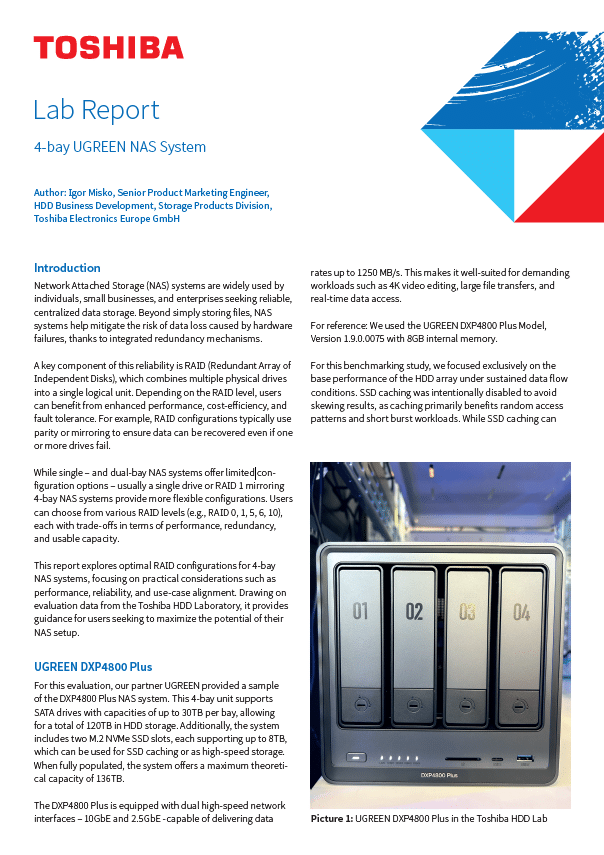Lab Report for 4-bay UGREEN NAS System
Introduction
Network Attached Storage (NAS) systems are widely used by individuals, small businesses, and enterprises seeking reliable, centralized data storage. Beyond simply storing files, NAS systems help mitigate the risk of data loss caused by hardware failures, thanks to integrated redundancy mechanisms.
A key component of this reliability is RAID (Redundant Array of Independent Disks), which combines multiple physical drives into a single logical unit. Depending on the RAID level, users can benefit from enhanced performance, cost-efficiency, and fault tolerance. For example, RAID configurations typically use parity or mirroring to ensure data can be recovered even if one or more drives fail.
While single – and dual-bay NAS systems offer limited configuration options – usually a single drive or RAID 1 mirroring 4-bay NAS systems provide more flexible configurations. Users can choose from various RAID levels (e.g., RAID 0, 1, 5, 6, 10), each with trade-offs in terms of performance, redundancy, and usable capacity.
This report explores optimal RAID configurations for 4-bay NAS systems, focusing on practical considerations such as performance, reliability, and use-case alignment. Drawing on evaluation data from the Toshiba HDD Laboratory, it provides guidance for users seeking to maximize the potential of their NAS setup.
View the whole lab report here.
Igor Misko, Senior Product Marketing Engineer Storage Products at Toshiba Electronics Europe


